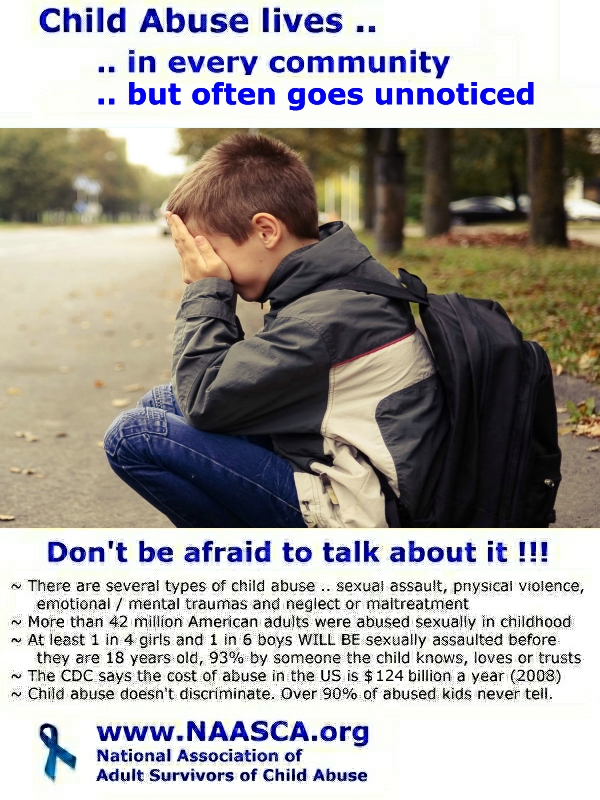| NAASCA Posters / Essays Celebrating April as National Child Abuse Awareness Month | |
| Child Abuse lives everywhere -- don't be afraid to talk about it | 29 of 30 .. |
 |
Child Abuse lives .. ...... in every community ...... but often goes unnoticed Recognizing child abuse and trauma isn't always easy, but it's an adult responsibility. Kids do not self-report. Many times there are few obvious physical marks on a child, so the first step is to learn what to be aware of. The most typical things to watch for are changes in behavior, attitudes and performance, and these can be a little different for very young kids and those who are a bit older. Her's a list of some symptoms of sexual abuse and trauma in children that don't include obvious physical signs. Indicators of sexual abuse in young children include: » Sleep disturbances » Bed wetting and/or loss of fecal control » Regressive behavior » Self-destructive or risk-taking behavior » Impulsivity, distractibility, difficulty concentrating » Refusal to be left alone » Fear of an individual, such as an alleged offender » Fear of people of a specific type or gender » Fire setting » Cruelty to animals » Problems relating to peers » Sudden changes in behavior » Difficulties in school » Inappropriate interest (for the age) in things sexual Indicators of sexual abuse in older children include: » Eating disturbances (overeating, bulimia and anorexia) » Running away » Substance abuse » Self-destructive behavior, suicide attempts, self-mutilation » Incorrigibility » Criminal activity » Depression and social withdrawal » Problems relating to peers » Sudden changes in behavior » Anger issues » Difficulties in school Please see: www.SpeakingOut-CSA.com/SignsSymptoms.html |
| ..<== Go to previous Poster / Essay |